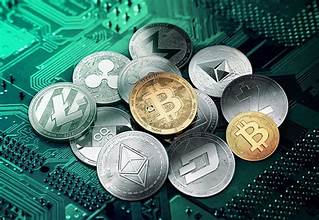
In the digital age, traditional forms of currency are undergoing a profound transformation, as digital currencies, also known as cryptocurrencies, continue to gain traction and popularity worldwide. From Bitcoin to Ethereum, Ripple to Litecoin, these digital assets are revolutionizing the way we transact, invest, and store value in the digital economy. In this article, we delve into the world of digital currency, exploring its origins, characteristics, applications, and implications for the future of finance and beyond.
Understanding Digital Currency: Origins and Characteristics
Digital currency is a form of currency that exists purely in digital or electronic form, with no physical representation like banknotes or coins. Unlike traditional fiat currencies, which are issued and regulated by governments and central banks, digital currencies operate on decentralized networks, typically based on blockchain technology.
Blockchain, the underlying technology behind most digital currencies, is a distributed ledger system that records all transactions in a secure and transparent manner. Each transaction is verified by a network of computers (nodes) and added to a chain of blocks, making it virtually tamper-proof and resistant to fraud or manipulation.
Key Characteristics of Digital Currency:
- Decentralization: Digital currencies operate on decentralized networks, meaning they are not controlled or regulated by any single entity or government. Instead, they rely on peer-to-peer networks and consensus mechanisms to validate and record transactions.
- Security: Blockchain technology provides a high level of security for digital currencies, utilizing cryptographic algorithms to protect transactions and data from unauthorized access or tampering.
- Anonymity: While transactions on the blockchain are transparent and verifiable, the identities of the parties involved are typically pseudonymous, offering a certain degree of privacy and anonymity.
- Borderless: Digital currencies can be transferred and exchanged across borders quickly and seamlessly, without the need for intermediaries like banks or financial institutions. This borderless nature makes them ideal for cross-border transactions and remittances.
- Limited Supply: Many digital currencies have a finite supply, with predetermined issuance schedules and maximum supply caps. This scarcity can give them value similar to precious metals like gold and silver.
Applications of Digital Currency
Digital currency has a wide range of applications across various industries and sectors. Some of the most notable applications include:
- Payment Systems: Digital currencies can be used as a medium of exchange for goods and services, either online or in physical stores. Many merchants and businesses now accept digital currencies as a form of payment, offering customers an alternative to traditional payment methods.
- Investment: Digital currencies have emerged as a new asset class for investors, offering opportunities for diversification and potential high returns. Cryptocurrency exchanges allow investors to buy, sell, and trade digital currencies, while investment vehicles like cryptocurrency funds and futures contracts provide exposure to the market.
- Remittances: Digital currencies offer a fast, efficient, and cost-effective way to send money across borders, particularly for individuals in countries with limited access to traditional banking services. By bypassing intermediaries like banks and remittance companies, digital currencies can significantly reduce transaction fees and processing times for remittances.
- Decentralized Finance (DeFi): DeFi platforms leverage blockchain technology to offer financial services such as lending, borrowing, and trading without the need for traditional financial intermediaries. These platforms provide greater financial inclusion and access to capital for individuals and businesses worldwide.
Challenges and Future Outlook
Despite the potential benefits of digital currency, there are several challenges and obstacles to widespread adoption. Regulatory uncertainty, scalability issues, security concerns, and volatility are among the key challenges that must be addressed to realize the full potential of digital currency.
However, despite these challenges, the future outlook for digital currency remains overwhelmingly positive. As technological advancements continue to drive innovation and adoption, digital currency is poised to transform finance, commerce, and society in ways we have yet to imagine.
Conclusion
Digital currency represents a paradigm shift in the way we think about money and value in the digital age. With its decentralized nature, security features, and borderless capabilities, digital currency has the potential to revolutionize finance, empower individuals, and reshape the global economy. As we continue to explore the possibilities of digital currency and its applications, one thing is clear: the future of money is digital, and the possibilities are endless.

